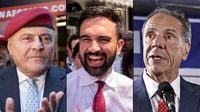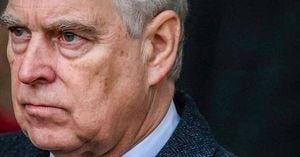As New Yorkers head to the polls on November 7, 2025, the race to succeed Eric Adams as mayor is being watched with keen interest—not just by political analysts and voters, but by a new breed of election forecasters: prediction market bettors. Their collective wisdom, it turns out, may be outpacing traditional polling methods, as recent events in New Jersey and New York City have shown.
Consider the recent New Jersey governor’s race. According to reporting by Axios, traditional polls suggested a nailbiter, with Democrat Mikie Sherrill holding a razor-thin 1% edge over Republican Jack Ciattarelli in the final survey before election day. Democrats, eyeing the numbers, were understandably anxious. But on Kalshi, a leading domestic prediction market, bettors were unmoved. For months, they had been buying shares in a Sherrill victory at 80 cents on the dollar or more, signaling strong confidence in her win. When the votes were counted on November 5, Sherrill didn’t just eke out a victory—she triumphed by a commanding 13-point margin, far surpassing her predecessor Phil Murphy’s performance in 2021.
This isn’t the first time prediction markets have outperformed opinion polls. Last year, these platforms correctly foresaw Donald Trump’s victory over Kamala Harris, defying conventional polling wisdom. The mechanism is straightforward: participants buy shares representing possible outcomes, priced according to perceived likelihood. When the event resolves, those on the correct side receive a payout. It’s a system that rewards conviction and, as recent results suggest, often delivers a more accurate read on the future than asking people what they plan to do in a voting booth.
The divergence between polls and prediction markets isn’t just a quirk of statistics—it’s a reflection of what each method actually measures. Polls ask voters about their intentions, capturing a snapshot of sentiment that can shift with the news cycle. Prediction markets, on the other hand, aggregate the expectations of bettors willing to put money on the line, synthesizing public information, gut feelings, and sometimes insider knowledge into a single, actionable price. As Axios explains, both can be technically correct—polls might show a close race while markets price in a landslide, based on the perceived reliability of the underlying data and the conviction of participants.
Of course, prediction markets are not without their quirks. Unlike polls, which restrict their samples to eligible voters, markets are open to anyone, anywhere. This global access can introduce distortions, as seen when Kalshi had Zohran Mamdani favored to win the New York City mayor’s race overall—even though Andrew Cuomo enjoyed more support from bettors actually living in the city. It’s a reminder that while markets can be prescient, they’re not immune to outside influences or the passions of distant speculators.
Turning to New York City, the race to replace Eric Adams has been defined by shifting alliances, dramatic exits, and a clear front-runner in Zohran Mamdani. According to The Times, Mamdani, a 34-year-old state assemblyman and self-described socialist, has led the polls since defeating Andrew Cuomo in the Democratic primary in June 2025. His campaign has centered on freezing rents and lowering the cost of living, a message that’s resonated powerfully with young voters and those squeezed by New York’s relentless housing crunch. Among voters who cite affordable housing as their top concern, Mamdani commands a staggering 71% support.
But Mamdani’s appeal isn’t limited to the young or the economically anxious. Polls show him leading in every age and racial group, though his margin among white voters is a more modest 12 percentage points compared to his overwhelming support among minority communities. His focus on bread-and-butter issues like housing and inflation has helped him maintain a broad coalition, even as he ranks third among voters most concerned about crime—a vulnerability his opponents have sought to exploit.
The field has narrowed in recent weeks. Incumbent Eric Adams, who had been running as an independent, withdrew from the race on September 28 after bribery and fraud charges were dismissed by the Trump administration. Republican Curtis Sliwa, a former talk-show host and perennial candidate, continues to campaign despite trailing badly in both polls and betting markets. A Republican victory is considered a long shot; the last GOP mayor, Michael Bloomberg, disaffiliated from the party in 2007.
Andrew Cuomo, the former governor who resigned in 2021 amid a sexual harassment scandal, mounted a comeback bid as a Democrat but was bested by Mamdani in the primary. Since then, Cuomo has run as an independent, but his campaign has failed to gain significant traction. According to polling from AARP in mid-October, if Cuomo were to drop out, Mamdani would retain a comfortable lead. However, if Sliwa were to exit, Mamdani’s margin would narrow considerably—down to just four points—though Sliwa has shown no inclination to step aside.
What do the betting markets say about New York’s mayoral contest? The answer is emphatic: Mamdani is the overwhelming favorite. On Polymarket, a leading site where users wager on political outcomes, Mamdani has a 91% chance of victory. Cuomo lags far behind at 9%, while Sliwa is given less than a 1% shot. Mamdani has held the top spot in these markets since overtaking Cuomo in June, and his odds have only solidified as election day approaches.
It’s worth noting that prediction markets are particularly popular among cryptocurrency investors—a group that played a visible role in the New Jersey governor’s race, where pro-crypto rallies were organized in support of Sherrill. While there’s no direct evidence that crypto enthusiasts are tipping the scales in New York, their presence in prediction markets underscores the growing intersection of finance, technology, and politics.
As the final votes are cast, political professionals are watching closely—not just to see who wins, but to gauge whether prediction markets will once again prove more reliable than traditional polls. The stakes are high, and the implications go beyond a single election. If markets continue to outperform polls, campaign strategists, journalists, and even the candidates themselves may have to rethink how they read the political tea leaves.
For now, all eyes are on New York City, where Zohran Mamdani stands poised to make history. Whether the wisdom of crowds proves prophetic once more—or whether the polls have the last word—will soon be revealed by the only numbers that truly matter: the votes themselves.




